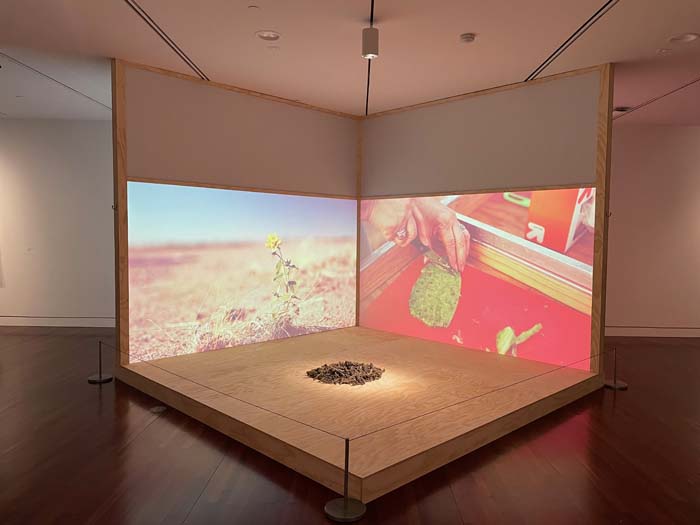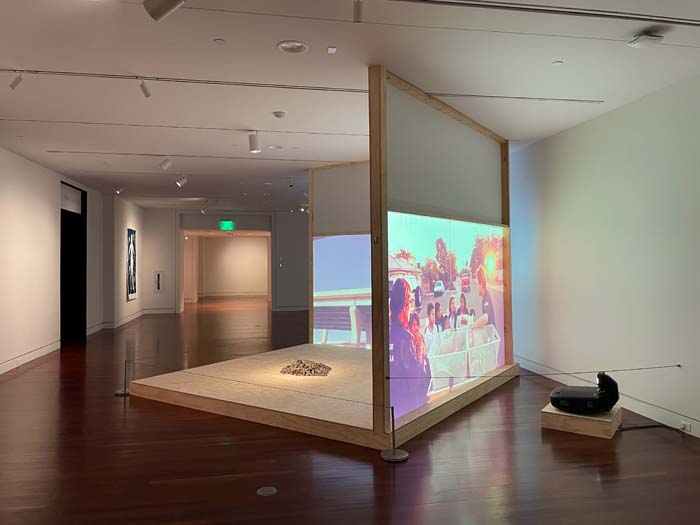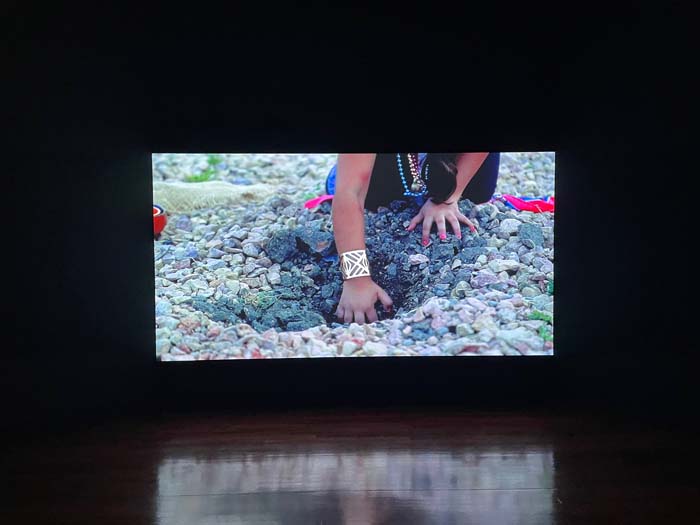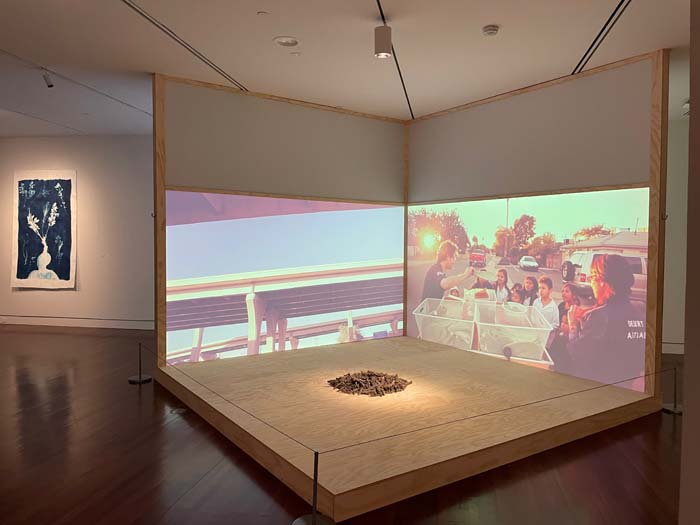Working across performance, printmaking, video, and Native ecological practices and philosophies, Desert ArtLAB cultivates and nourishes Indigenous agriculture through a Chicanx lens.
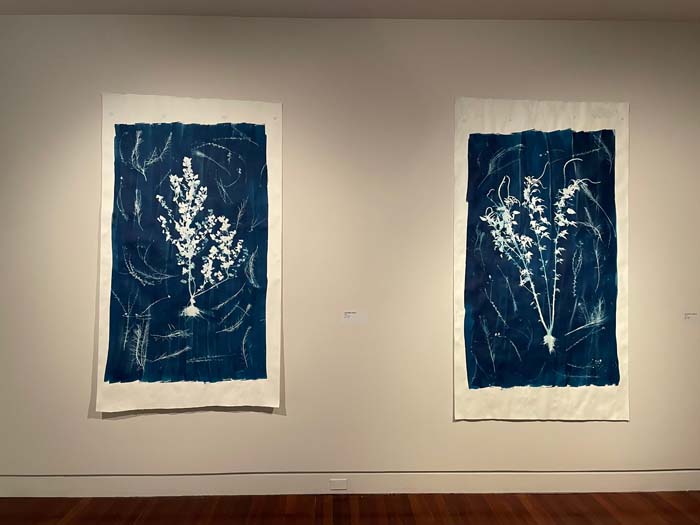
Desert ArtLAB: Chicanx Landscapes
August 26, 2022–February 12, 2023
Colorado Springs Fine Art Center at Colorado College
Desert ArtLAB is an experimental ecological-art collective led by April Bojorquez (Chicana/Rarámuri) and Matt Garcia (Chicano) based in Pueblo, Colorado. By reengineering the legacies of social sculpture and public art, the LAB’s work explores ecological rituals and agricultural practices indigenous to the Southwest region.
For their artist residency at the Colorado Springs Fine Arts Center at Colorado College, the duo has produced a new series of six large-scale cyanotypes, currently on view in their exhibition Chicanx Landscapes. Cyanotypes are also known as solar prints—the sun activates a chemical process that produces ethereal images in seductive blue gradients. Originally invented in the 19th century to reproduce engineering diagrams (i.e. blueprints), the cyanotype quickly became a popular medium for botanical illustrations, a tradition Desert ArtLAB extrapolates to challenge persistent misunderstandings—and prejudices—rooted in colonial bias and the systematic (and violent) erasure of Indigenous wisdom.
These cyanotypes radiate a forensic beauty, especially the pieces that incorporate human figures with desert plants cultivated by the artists over many years. As a visual manifestation of organic and eternal kinship, they represent the interconnectedness—and interdependence—of all living things. Situated in between the prints is a makeshift plywood stage with a spot-lit pile of cholla cacti and a split-screen video projection documenting the myriad ecological activities of the Desert ArtLab in the so-called drylands.
An additional viewing room is dedicated to a single-channel video entitled Agua y Tierra (Water and Land) (2021). The five-minute piece shows the ceremonial Indigenous water blessing of their flagship earthwork in Pueblo, in which they converted a degraded urban plot into a public garden of native cacti.

Noticeably absent from the exhibition is the collective’s Mobile ECO_STUDIO (2013-present), a tricked-out paletero cart that doubles as a self-propelled environmental laboratory. The functional sculpture was recently on view in Phoenix, where Desert ArtLAB was first founded in 2010, but will make its way to Colorado Springs in time for the exhibition’s public celebration on October 7.
Upon the work’s arrival, Desert ArtLAB will commence a series of workshops around the Colorado College campus designed to educate the public about native desert plants, their significance as part of the “edible landscape,” and their symbolism as species of resilience—and resistance. These plants can survive extreme temperatures, from blistering days to freezing nights. They ensure their own survival by storing water in their stems and they grow in land so unforgiving that Garcia recalls having to use a jackhammer in order to plant Desert ArtLAB’s Pueblo garden.
Across their oeuvre, Desert ArtLAB confronts the false myth of the desert as an inhabitable, arid wasteland—a symptom of environmental racism spawned by invasive settler colonialism. By nurturing the principles, philosophies, and practices of Southwestern Indigenous agriculture, Desert ArtLAB reveals sacred truths, embedded in the land and hiding in plain sight.
Chicanx Landscapes remains on view until February 12, 2023, with a public opening on October 7, 5-8 pm and a special performance at 5:30 pm at the Colorado Springs Fine Art Center at Colorado College, 30 West Dale Street, Colorado Springs.
